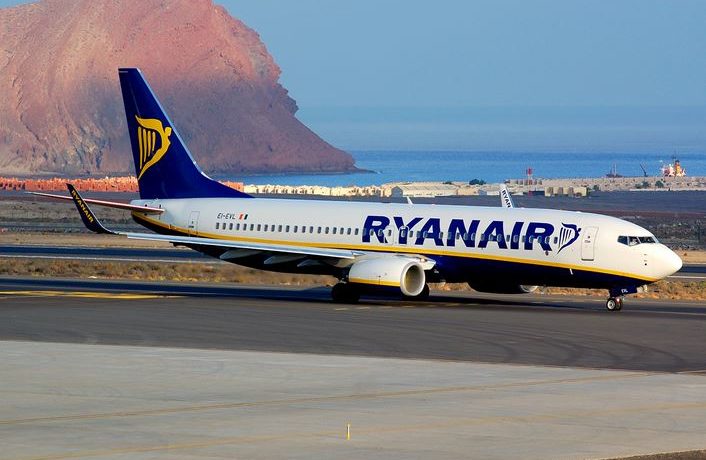The airlines carried more than 3.68 million passengers in the Canary Islands from January 2016 to September 2016, representing a 11.9% increase over the same period in 2015, according to figures released by the General Department of Knowledge and Tourism Studies under the Ministry of Industry, Energy and Tourism.
In contrast, traditional companies moved more than 5.99 million passengers in the first nine months of the year, 16.2% more than the same period last year, the total of 9.67 million international travelers who arrived by plane from January to September, 14.6% higher than a year earlier.
While only in September, the ‘low cost’ moved 410,256 people (+11.2) compared to 595,415 travelers traditional (+21.7), to a total of 1.005.67 passengers by air ( 17.2%)
THE ‘LOW COST’ MOVE OVER 31.6 MILLION PEOPLE IN ALL SPAIN
In the whole of Spain, the airlines carried more than 31,690,000 passengers from January 2016 to September 2016, representing 12.6% compared to the same period of 2015 ,.
In addition, traditional companies moved more than 31.67 million passengers in the first nine months of the year, 10.8% more than the same period last year, the total 63.36 million international travelers arriving by plane January to September, 11.7% higher than a year earlier.
Thus, the low-cost and traditional were distributed to 50% air passenger traffic in the first nine months of the year.
In September, the ‘low cost’ transported 4.17 million passengers, 11.7% more than in the same month last year, capturing 49.7% of air traffic, while traditional moved to 4.22 million passengers, 12.6% more than in the same month of 2015, with 50.3% of the total flow.
Among the low-cost, Ryanair, easyJet and Vueling continue to lead the ranking, concentrating between the three 65.4% of passenger volume generated in ‘low cost’ and 32.5% of total air flow international received in Spain. The three showed significant progress in September.
From January to September, the main countries of international passengers traveling to Spain showed a remarkable growth that benefited most communities, except for the Region of Murcia, Cantabria and Aragon. 80.5% of all luxury air came from the EU, experiencing an increase of 12.1%.
UNITED KINGDOM AND ITALY, THE MAIN MARKETS
UK, with 11.66 million passengers, 36.8% of the total, led the low cost arrivals to Spain until September, after an increase of 14.4%; was followed by Italy with 11.8% of income in this way, to almost 3.75 million passengers, up 9.8%, and Germany, with 11% of the total, almost 3.5 million Write in ‘low cost’, 13.3% more.
France, fourth source market, with 8.5% of all passengers ‘low cost’, increased by 10.6% its passengers from January to September to 2.68 million.
It was followed by Netherlands with 1.98 million passengers in low cost airlines, representing 12.5% compared to the first nine months of 2015, with 6.2% of the total.
Then Ireland (+ 16.4%), Switzerland (-0.8%) and Belgium (+ 12.5%) which accounted for 3.1% of all travelers, with 979,919 passengers, 976,995 passengers and 971,651 tourists respectively.
In contrast, the Nordic countries recorded increases in the first nine months of the year, 27.6% more passengers arriving from Denmark and 17.4% more passengers, ranking as the ninth outbound market.
IBIZA ACCUMULATE THE LARGEST INCREASE
The Barcelona-El Prat airport garnered 25.5% of all travelers ‘low cost’, with growth of 13.3% and more than 8.08 million passengers, leading passenger arrivals to Spain for this track.
He followed the Malaga-Costa del Sol, with 12.1% of the total and 14.9% more arrivals at low cost, to 3.84 million passengers, and Palma de Mallorca received a total of 3 , 55 million passengers in low cost airlines in the first nine months of the year, an increase of 16.1%, representing 11.2% of the total.
Then Alicante airport with 3.5 million passengers low cost, 16.1%, and 11% of the total. Fourth, airport Madrid-Barajas Adolfo Suarez, who garnered 10.9% low cost flow, transporting 3.45 million passengers stood, representing 6.3% from the same period in 2015.
Ibiza was the airport most passengers increased over the first nine months of the previous year (+ 19.5%) at low cost, with 1.28 million passengers, 4% of the total. Meanwhile, Valencia increased its passengers in this way by 14%, Tenerife South airport (+ 13%) and Gran Canaria (+ 15.8%) and Lanzarote rose by 9.4% passengers arriving by this route in first nine months of the year.
CATALUÑA, MOST BENEFITED
For communities, Catalonia has dominated in the first nine months of the year 28.1% of passengers at low cost, with more than 8.91 million passengers, up 11.6%.
Baleares was the second most benefited and received 16.3% of passengers on low-cost, up 5.17 million, 17% more Community. And third Andalucía is located, with 14.8% of total inflows in this way, to 4.69 million passengers (+ 15.2%).
To these are followed by Valencia with 4.57 million tickets at low cost through September, which is 15.6% more than a year ago and 14.4% of the total. The Canary Islands totaled 3.68 million passengers, 11.6% of the total and 11.9% more than the figure recorded a year ago.
The Community of Madrid captured 10.9% of total arrivals to over 3.45 million passengers following an increase of 6.3%.
In September, Catalonia and the Balearic Islands were the destinations with the most international arrivals, concentrating 27.7% and 19.3% of total air flow at low cost, respectively. The largest increases in the ninth month of the year recorded Baleares (+ 17.8%), Andalusia (+ 16.8%) and Valencia (+ 16.4%).
Courtesy of Europa Press
Photo Luciano Fumero Labrador



